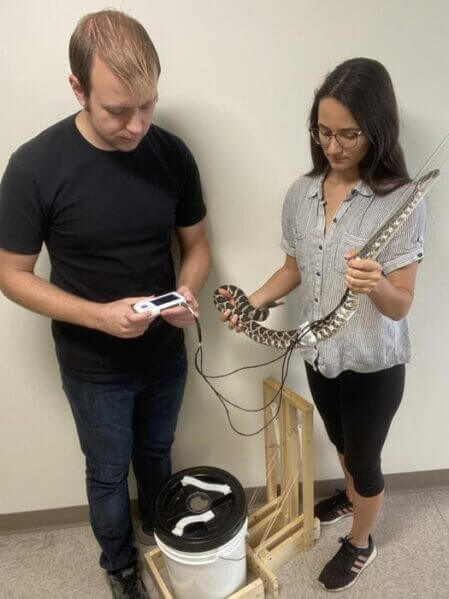New research from Loma Linda University in the US suggests that rattlesnakes in Southern California can exhibit social buffering, a phenomenon where the presence of a conspecific companion helps reduce the stress response in the face of challenging situations. This discovery challenges the notion that reptiles, particularly solitary foragers, lack complex social behavior.
Lead author Chelsea Martin, a PhD student at Loma Linda University, explains, “We showed that when two snakes were together and experienced a stressful situation, they could buffer each other’s stress response, much like what happens to humans when they endure a stressful event together. This dampening of the stress response has not been reported previously in any reptile species.”
The researchers observed that the presence of a snake companion significantly reduced the change in heart rate when snakes were exposed to stress. Since the study involved wild-caught rattlesnakes, it suggests that social buffering is likely a natural behavior that can persist in captivity.
The study assessed social buffering in 25 southern Pacific rattlesnakes in different scenarios: alone, with an inanimate control object (a rope), and with a same-sex companion. By measuring heart rate fluctuations, the researchers were able to gauge the snakes’ stress levels and the impact of social buffering.
The researchers found that social buffering was equally pronounced in both male and female snakes and in populations of rattlesnakes that overwintered alone or in groups. This indicates that the tendency to buffer stress is not limited to specific snake populations or genders.
While the study sheds light on the social behavior of snakes, Martin also hopes that it will contribute to changing the negative perception of rattlesnakes. She notes that these findings could help improve their public image.
The study does have some limitations, as the snake pairs were kept in confined spaces during the experiments. The researchers did not investigate whether a stress buffering response occurs when snakes are in close proximity but not in physical contact. Additionally, the impact of familiarity between two snakes on their social buffering response remains an unknown variable that the researchers plan to explore in future studies.


